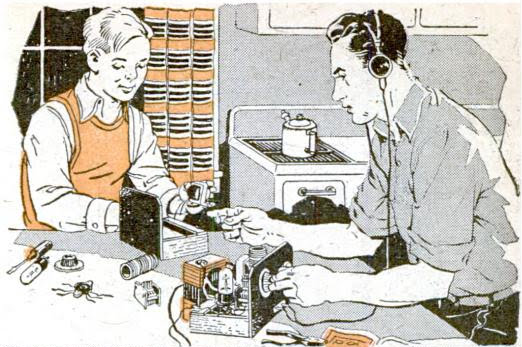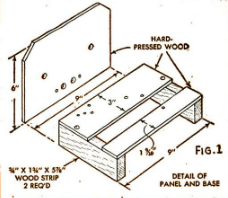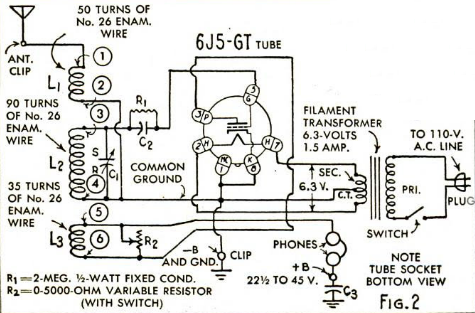
 Seventy years ago this month, the father-son team shown here at the kitchen table couldn’t decide which of them was going to get the one-tube radio after they finished putting it together. But fortunately, the circuit was simple enough that they decided to simply make two of them, one for each. They are following the plans that appeared in the April 1947 issue of Popular Mechanics.
Seventy years ago this month, the father-son team shown here at the kitchen table couldn’t decide which of them was going to get the one-tube radio after they finished putting it together. But fortunately, the circuit was simple enough that they decided to simply make two of them, one for each. They are following the plans that appeared in the April 1947 issue of Popular Mechanics.
The set was billed as being for the beginner, and both easy to build and simple to operate. It used a single 6J5-GT tube as the regenerative detector, and could pull in standard broadcast stations with good headphone reception up to about 400 miles. To keep things simple, it used a transformer to supply the 6 volt filament current, but used a 45 volt battery to supply the B+.
 Construction was made easy by the “semibreadboard” chassis shown here, consisting of two wooden slats mounted on two wooden strips. The two slats were spaced so that the tube socket could be mounted between them, eliminating the need to cut a large hole for the socket.
Construction was made easy by the “semibreadboard” chassis shown here, consisting of two wooden slats mounted on two wooden strips. The two slats were spaced so that the tube socket could be mounted between them, eliminating the need to cut a large hole for the socket.
The magazine promised that the next month’s issue would show how to convert the set into a more powerful all band 4-tube set, although the one-tube design was more than adequate for the beginner who simply wanted to build a set to pull in local stations.

